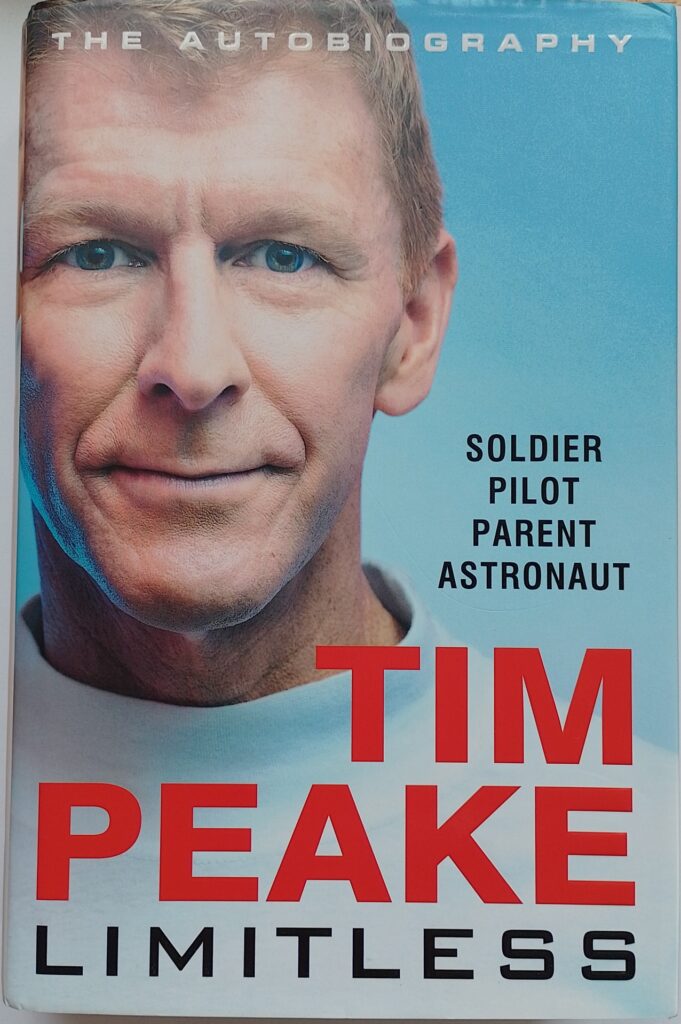First published 2020. Century, hardback, 2020, pp 478, c.160,000 words.
Tim Peake was the second British person to go into space, and he spent six months on the International Space Station [ISS] in 2015.
This book is his autobiography, written with the help of a ghost writer. Peake’s career follows that of the ‘typical’ astronaut: undistinguished at school, joins the military, becomes a pilot, then a test pilot and from there applies to become an astronaut. Peake’s background was very normal, as he says. His parents were loving, he has an elder sister, the family lived in a cul-de-sac, and his neighbours were similar and friendly. The neighbourhood children played together and the families occasionally went on camping trips together. He went to the local school.
Peake had a fascination with things military from an early age, joining the cadets at thirteen, which he loved and rose to be the senior cadet of his group, a warrant officer. Along the way he acquired a love of helicopters and decided that was what he wanted to do in life: fly helicopters in the army. The air corps was not exactly the most fashionable part of the army, but he didn’t care. He went straight from school to Sandhurst for officer training, with just a short gap where he learned how to mix a cocktail like Tom Cruise. From Sandhurst he joined his regiment and served with them in Northern Ireland, Germany, and a range of other places. From his descriptions he seems to have been in his element.
It is three-fifths through the book before he gets even to thinking about becoming an astronaut. His army career is coming to a turning point. He could stay, but he would then become a desk jockey. He decides to leave and become a test pilot for a helicopter manufacturer. His wife sees an advert that announces that the European Space Agency [ESA] are seeking astronauts. This will be the first time ESA has trained its own. Britain doesn’t participate in ESA’s human space-flight programme, so there seems little chance. Peake makes it through selection round after round. Finally he makes it as one of six selected. Britain has decided to join the programme, so by selecting Peake, ESA have won substantial extra funding. As this is the first group ESA have trained, the programme is a bit hit-and-miss, but largely follows other space agencies’ agendas. Once trained, there is the agonising wait to be selected for a mission. Peake is selected to accompany Sarah Brightman who is to go on a two-week, privately-funded trip to the ISS. It’s a disappointment, but then something goes wrong with Brightman’s funding and the trip is off. Then Peake is selected for a six-month stint at the ISS – his dream has come true.
Peake saw one of his main tasks on the ISS as outreach: enthusing children with the space programme, thus encouraging more to study ‘STEM’ subjects. For example, he participates in the London Marathon while on the ISS, on a treadmill. He frequently makes calls to schools and does antics and experiments designed to appeal to children. The book seems like an extension of this work, with some of the language of children, obviously. It is an easy read, being well written, but much more about arm life than that of the astronaut. Perhaps an astronaut life is mostly very dull – endlessly testing equipment and repeatedly performing not very exciting, but necessary, science experiments. That is the impression one comes away with after reading this.
© William John Graham, June 2022

